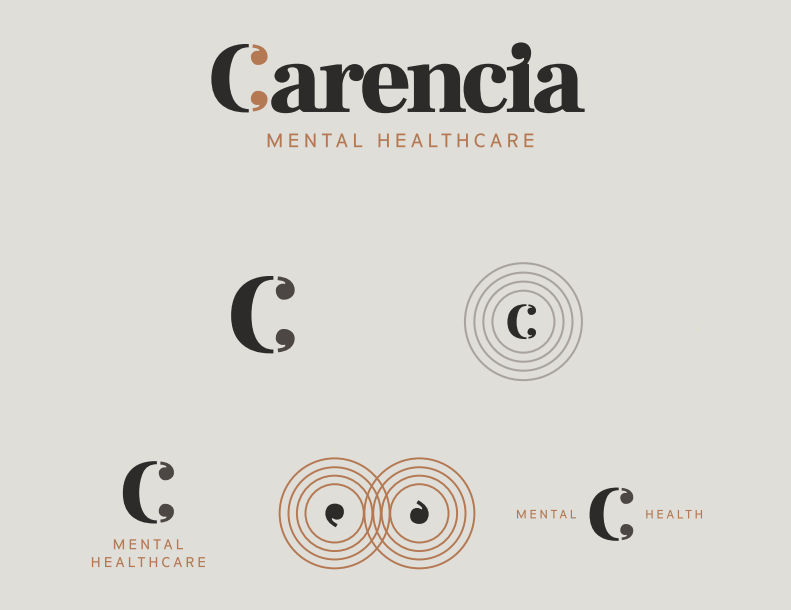The medical industry as a whole has an odd relationship with brand identity. You see massive healthcare chains and pharmaceutical companies roll out immersive brand strategies, but conversely, small practices and providers have little to no brand identity in place.
The healthcare organizations that people interact with most often and who are most embedded in our communities somehow are the ones lacking a unique voice in the marketplace. In this blog, we’ll explore this topic, the value of branding to the smaller healthcare providers, and how this informed Carencia’s decision to take branding seriously.
Branding is more than a logo.
Before talking about the role of brand and the importance of experience, we have to define what exactly we mean by branding. A full brand experience includes the name, the logo, the typeface, additional branded elements, the way the company communicates, the experience at their locations, and much much more. In other words, branding is taking a thoughtful and curated approach to every touchpoint a client/customer has with a company.
When put in that context, the importance of branding for medical providers, especially those working in mental health, starts to become apparent.
Why branding matters in Medicine.
When you think of what “every touchpoint a client has with a company” means in the context of a traditional business-to-consumer company, you picture the logo, signage, uniforms, interior design, print assets, packaging, email correspondence, etc. There is simply a massive number of ways a consumer interacts with that brand. What you’ll notice is that almost all of those touchpoints exist at a medical practice.
By taking branding seriously, you’re delivering patients an experience that is cohesive and logical. Both of these qualities create comfort. Comfort creates brand loyalty and an ongoing patient relationship. A curated experience is not only calming and reassuring, it also speaks to how seriously you take yourself and how you feel your audience deserves to be treated.
Just by taking branding seriously and letting it impact all the ways a patient interacts with your practice, you’re elevating the experience of being a patient. That’s a powerful thing, especially when patients bring a lot of anxiety with them as they walk through the door.

Carencia as a use case.
So, where does a medical practice start when they’re ready to take branding and experience seriously? With their name, logo, and brand standards. These should be packed with meaning, and, in our opinion, the process should be approached no differently than if the business in question were a consumer brand.
This was our exact approach with Carencia. The name comes with a rich backstory. Referencing bullfighting, the carencia is the safe space the bull carves out for itself, or the location where it feels most comfortable, empowered and poised for success. That’s the exact mentality we want Carencia’s audience to have when they walk in the door.
Carencia, or Querencia, literally translated means to lack something. To that end, the goal of Carencia is to create a place of empowerment where individuals can evaluate what it is they feel like they’re missing. A place where self-reflection and vulnerability are encouraged. The two meanings behind Carencia come together to balance empowerment and reflection.
Visually, the brand is built around concentric circles. The concentric circles represent the many related layers of mental healthcare covered by Carencia. The quotation marks reference the therapeutic conversations that occur at Carencia.
In executing the wordmark, our true north was how the brand looked on a t-shirt. Not on scrubs, not on a printed form, not on signage. By approaching Carencia as a consumer brand, we’re inviting the audience to be a part of it, instead of just patronizing it.
From there, the brand gets expanded to cover additional apparel items, patient forms, the website, and much more. It’s a cohesive system that serves to elevate the experience of interacting with Carencia.
In conclusion.
There is no one ‘right way’ to approach branding. But, there are some wrong ways. You build a brand, whether you like it or not. Just like culture internally at an organization, the external brand experience WILL be defined by your audience if you don’t define it for them.
Don’t leave an opportunity on the table to create a deeper, more meaningful connection with those you serve. Use branding and a robust branded experience to improve upon your operations and turn first-time patients into long-term partners, and turn long-term partners into evangelists.

